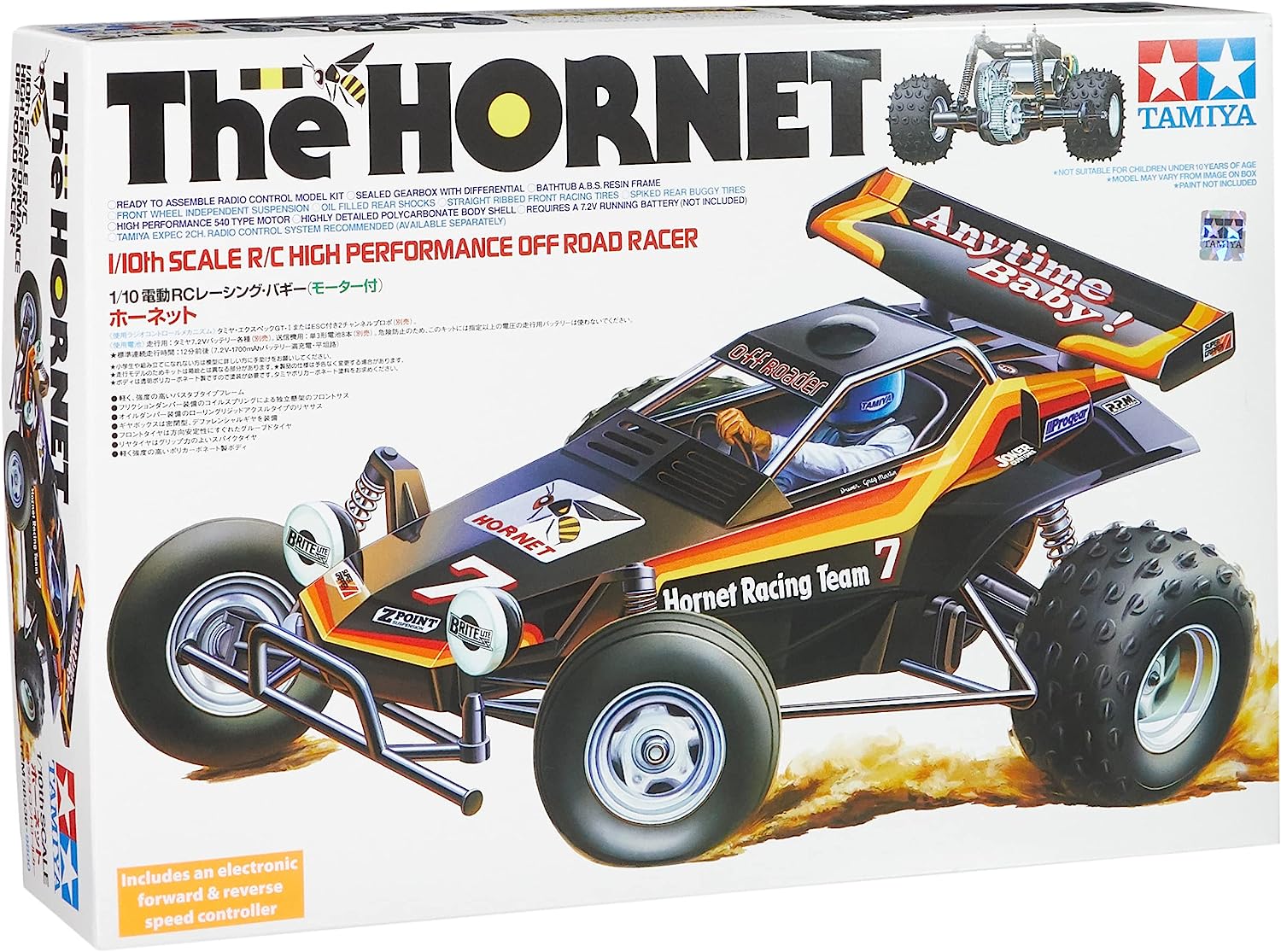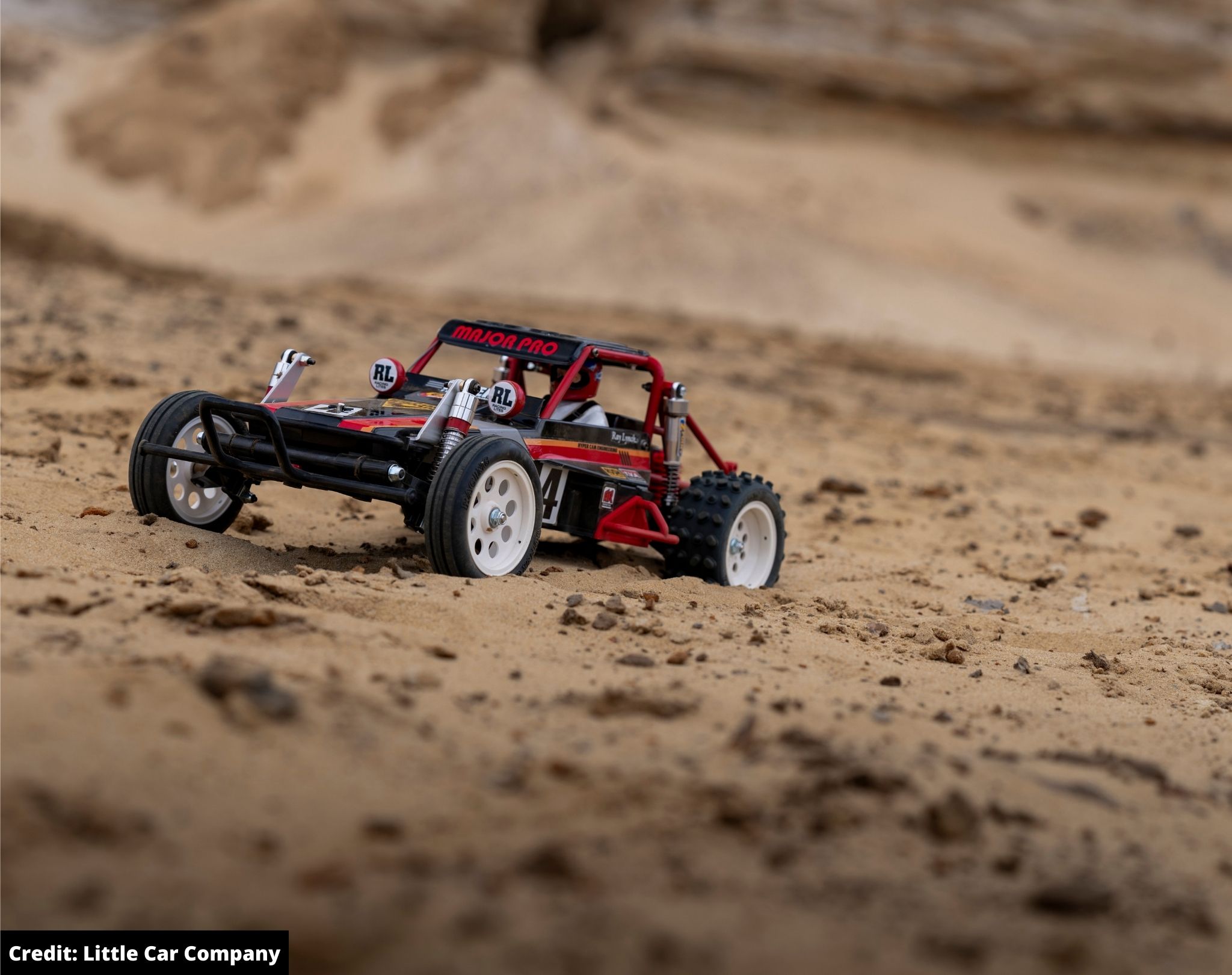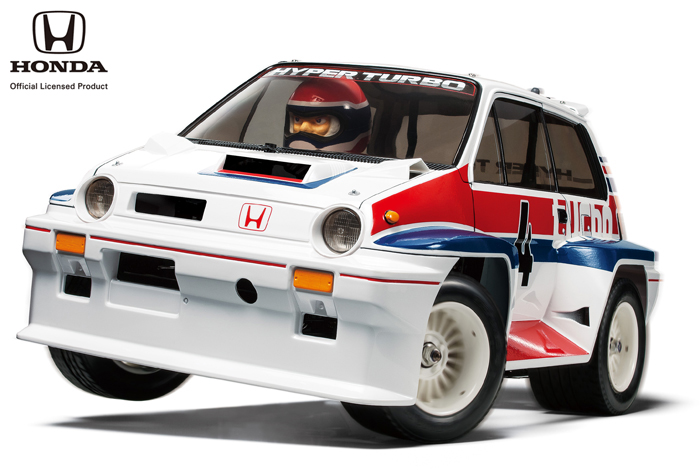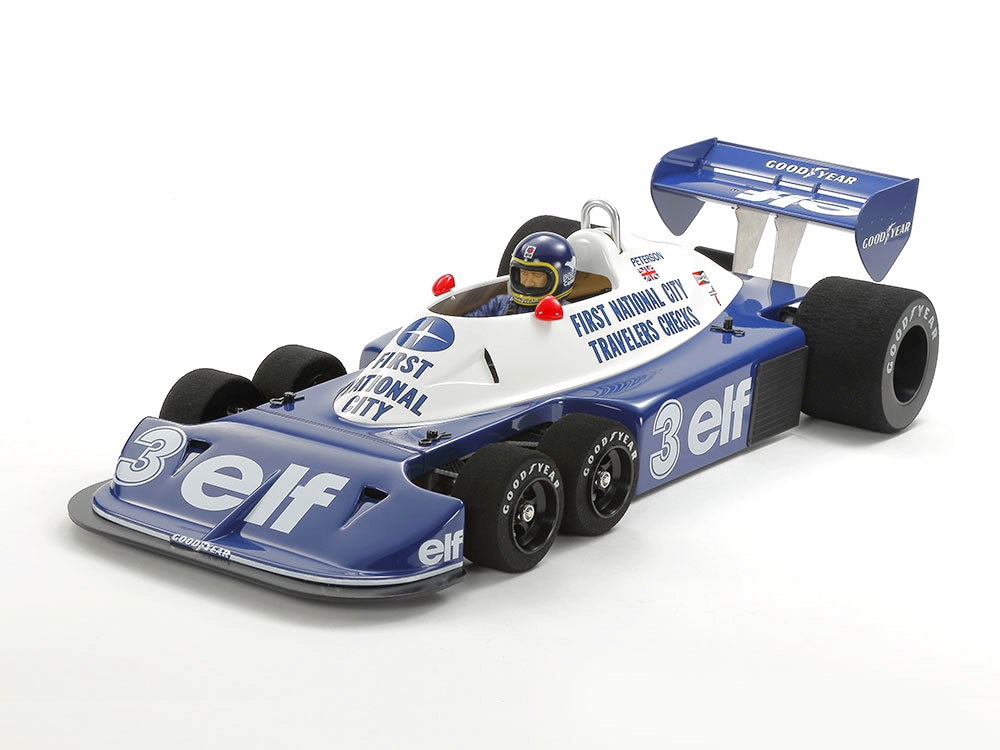Classic Tamiya RC Cars
Along with scuffed knees and big skids on a BMW, building a Tamiya radio-controlled car was a big part of many kids’ lives before online gaming was ever invented. The joy of lifting that big cardboard box lid to reveal a selection of parts, some recognizable and others mysteriously shaped and packaged. Still, a thumb through the instructions, shove everything off the kitchen table, and away you went.
Inevitably, it took far longer to build the radio-controlled car of your dreams, and it sometimes needed the help of a parent or older sibling. However, once built, these detail-perfect mini machines were a gateway to a world of driving when a real licence was still some way off. There were other makes of radio-controlled model cars, but Tamiya’s cars were the ones to have and which one you picked, or received as a ‘big’ present, marked you out among your mates.

The biggest seller for Tamiya of all time is the Hornet, one of its sand rail style buggies that formed the cornerstone of its range throughout the 1980s and beyond. This was the stuff of dreams, even if it was far from Tamiya’s first radio-controlled icon – that credit goes to the company’s Porsche 934 Turbo model of 1976 that is now a much prized collector’s item. What set the Hornet apart was its sharp looks, RS540 motor that gave it plenty of power, and its agility when finished. And building it was simple thanks to the step-by-step instructions.
Once finished, the Hornet could tackle all sorts of terrain, so you didn’t need a big patch of tarmac to run it at full tilt. Even if you hit the occasional obstacle, like a tree or your folks’ lawnmower, the Hornet was tough enough to survive the impact and come back for more. The only limiting factor was the battery life, though this could be overcome with duplicate packs and a charger.
Many Hornet owners will have been bitten by the Tamiya bug with the Grasshopper, which was launched around the same time as the Hornet and had similar details and durability. The only thing the Grasshopper missed was the more powerful motor as it came with an RS380 electric motor. Not that this put off many buyers as the artwork on the box was fantastic and Tamiya provided the shops selling its kits with innovative videos showing the cars in action to further whet the appetites of customers.
Tamiya realised just how popular the off-road genre was and went on to fill it with more models, such as the Sand Scorcher, Holiday Buggy, and the Wild One that has since been turned into an EV you can drive yourself thanks to The Little Car Company.

However, it wasn’t all sand rails that took Tamiya to the forefront of the radio-controlled car world. The off-road theme was still evident in other popular models, but the likes of the Monster Beetle and Lunch Box van drew inspiration from the vast arena show trucks in the US with their jacked-up suspension and massive tyres. With clever use of the 1/10 scale of its main models, Tamiya made these cars just as must-have as its others. There was also the Wild Willy Jeep, which was a stunt model capable of pulling outrageous wheelies and skids with little learning required of the person working the controls.
Still with an off-road bent but more in keeping with the original machine that inspired it, Tamiya’s Subaru Brat was another direct sales hit, and certainly responsible for why this pick-up is now universally desired as a modern classic. The Brat was originally only sold as a model kit in the US in the 1970s, but by 1983 Tamiya had cottoned on to the demand for a radio-controlled version of this car. It was an instant success and has repeated this when it was re-released in 2007 and again in 2023.
If further proof was needed of how influential Tamiya’s models had become over a generation of kids who loved their radio-controlled cars, the Honda City Turbo was the clincher. Here was a model of a little known Japanese car that became a global sensation even when the 100bhp real thing barely registered on most new car buyers’ radars. It helped that Tamiya gave its interpretation of the Honda a cartoonish look that had a passing resemblance to the Group B rally machines of the time – another reason, perhaps, why these models caught the imaginations of so many kids being brought up with names such as Vatanen, Mikkola and Blomqvist.

Originally called Willy’s Wheeler, the Honda City Turbo by Tamiya mixed race and rally car styles to come up with something original but familiar. It was another ideal entry to the world of Tamiya as it was easy to build, robust and could be used on tarmac or loose surfaces, so you didn’t have to travel far from your front door to start using it.
However, Tamiya still had its more serious side even for its radio-controlled cars, which is why enthusiasts who wanted a detailed scale model of a Formula 1 car were so pleased when the firm introduced its Tyrrell P34 six-wheeler. Where other firms had only made static kits, here was Tamiya with a full working car in 1977 that, if you screwed your eyes up a little, was easy to imagine powering around Monaco or Spa.

Tamiya re-released the Tyrrell P34 in 2000 and it proved every bit as in demand as the original was when new. A measure of how highly regarded this kit is, original versions made between 1977 and 1983 now fetch considerable sums when they come up for sale. If it’s still in the box and unmade, then this is the Holy Grail, but even in perfect assembled condition the P34 will make strong money thanks to the nostalgia for Tamiya’s brilliant radio-controlled cars.
Do you remember these cars? Perhaps you even owned one, tell us all about it in the comments below!
Hi I built a range of these tamiya kits in my teens and Beyond, unfortunately I had about 6 on my window sill and we bought a puppy who managed to get up and knocked them off much beyond repair. At 76 I have started modelling again and was hoping to find the 6 wheeler tyrell online hopefully I will have even more fun and make a better job of it 2nd time round.
Laserbeam , 09/12/2023

I had the Porsche 959 Paris Dakar rally winner with the RX-540VZ Technigold motor. I bought it not long after it came out in 1986 a few months before my son was born in early 1987. I passed it on to him a while ago and I could see that he got exactly the same buzz out of it that I had all those years before. My grandson also gets to have a go and it’s exactly the same for him. Sadly it is a little fragile in places and parts are getting harder to source now so I don’t think he runs it as often as he would like. I seem to recall that I relocated the motor speed resistor as the designers placed it right at the front of the vehicle and took the full force of an (accidental) crash and didn’t fare too well. A brilliant model and great fun to build, (and strip down and rebuild when required). Happy days!!!
Phil, 09/12/2023
COMMENT